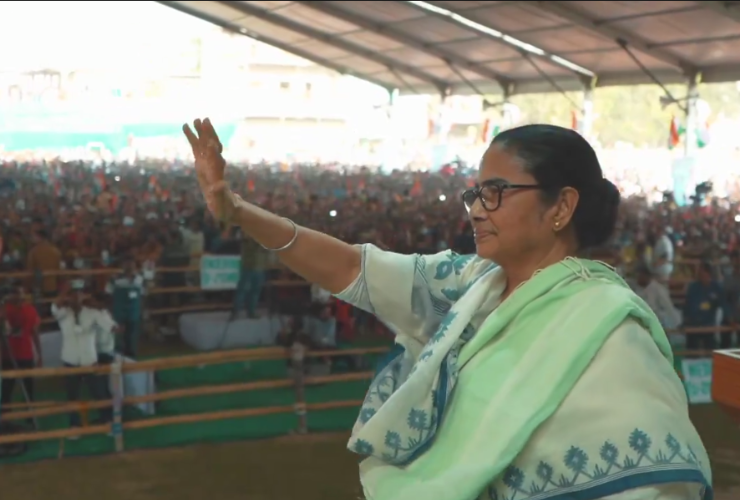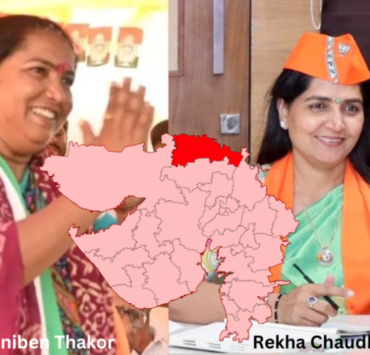
By Shikha Mukerjee

For the BJP in West Bengal, Mamata Banerjee is unidimensional—a failure as a woman chief minister. But evaluating a woman’s performance solely on the basis of her gender is discriminatory and disingenuous.
The deliberate reduction of Mamata Banerjee to a single category, India’s only woman chief minister at the moment, is a political construct, carefully crafted by critics who want to frame the ways in which a woman “ought to be” and how she ought to run a government. It is designed to focus on her failings and wield her performance as a weapon to destroy her credibility.
The problem is that the conservative, patriarchal elements of society, at their most prejudiced, have appropriated the right to decide how a woman must function as a leader and a chief minister. The Bharatiya Janata Party’s narrative of Mamata Banerjee’s “failure” as a woman chief minister has been carefully crafted to serve a political purpose. She is the BJP’s strongest opponent in West Bengal. Imperfect as the process of forming a political alternative in West Bengal has been, the fact that the process is underway under the Indian National Inclusive Developmental Alliance (I.N.D.I.A.), of which Mamata Banerjee is a part, is why the BJP has reduced her identity to a single dimension: the only woman chief minister.
It could be that for the BJP, the fact that a woman, an important opposition leader and a chief minister, has shown remarkable resilience in withstanding fierce attacks to oust her is the problem. Her gender challenges the hyper-masculine boast of a 56-inch chest. Or, it could be that the BJP is implying that a woman is unfit to govern.
The BJP’s discomfort with Mamata Banerjee is obvious. Leaders such as Narendra Modi and Dilip Ghosh have jeered and sneered at her. During the 2021 state assembly elections, Modi called ‘Didi O’ Didi’ and, more recently, Ghosh questioned her parentage, asking if she knew her father. Banerjee is an affront to a party and a leadership that has identified women as a separate and vulnerable “caste” deserving special attention and “upliftment”. As a representative of women, Banerjee does not exude vulnerability. On the contrary, she is a reminder that women do not need patronage to succeed in politics.
If Rekha Patra of the BJP is shakti swaroopa, or the embodiment of power, then who is Mamata Banerjee? Patra became the face of a protest by women in Sandeshkhali in North 24 Parganas, following a botched Enforcement Directorate raid on suspended TMC leader Sheikh Shahjahan relating to the ration scam currently under investigation. As she emerged from obscurity, the BJP picked her to represent the violence, harassment and exploitation of women by the local TMC strongmen led by Shahjahan.
Banerjee’s handling of Sandeshkhali incidents and defence of Shahjahan provided the BJP a fresh weapon to question her fitness to govern. This is a repeat of the 2021 campaign and its violent aftermath, when the BJP accused the Trinamool Congress of abetting gender violence, gang rape and sexual harassment across North and South Bengal. The narrative of Hindu women being targeted by the Trinamool Congress, which allegedly protected the perpetrators who were said to be Muslim is being repeated in Sandeshkhali. Accusations of sexual violence are being made by the BJP on behalf of Hindu women against local Muslim men.
Should Mamata Banerjee’s response as chief minister of West Bengal be seen through the prism of her gender? Or should the response be assessed in terms of how a chief minister is expected to handle such situations? Should there be a different yardstick to measure the performance of women who wield power? If gender is used as a specific parameter for evaluation, does it become discriminatory?
I would argue that measuring Mamata Banerjee’s performance, or the performance of any woman who holds public office, on the basis of gender is a deliberate exercise in devaluing the achievement of such women because they wrestled the patriarchy and reached the top. This is not to argue that women with power should undergo the violent process of separating themselves from their gender in how they do their jobs.
Public office held by an elected representative is axiomatically gender neutral, as is the power that flows from successfully contesting elections and occupying office. It would be erroneous to underestimate the enormity of the challenge of maintaining neutrality towards issues of gender and the gender of the person holding office in a culture of hyper masculinity and a civilization steeped in patriarchy. If Mamata Banerjee is portrayed as insensitive to women, and that too in a specific case, Sandeshkhali, by her political opponents, then that is problematic.
In the case of West Bengal the same opponents have been critical of Mamata Banerjee for her government’s entirely women-focused policies and its flagship scheme, Lakshmir Bhandar, a direct cash transfer to all women in poverty, now topped up to Rs 1000 per month from the earlier Rs 500 a month. The politics of gender sensitivity lies in the blindness of critics to schemes like Lakshmir Bhandar and the pioneering Amma Kitchens that were established by former Tamil Nadu chief minister J Jayalalithaa, who understood the problems of working women who are expected to earn and cook and provide care, all at the same time, even though each of these activities is a job in itself.
The intensity of expectation from Mamata Banerjee as chief minister and founder-leader of the Trinamool Congress is much higher because of her gender. Her critics do not admire her for creating more opportunities for women to participate in politics. They do not appreciate that she has roped in competent women, many of whom are young professionals, as legislators and parliamentarians. Of the 78 women who were elected to the 17th Lok Sabha, nine were from the Trinamool Congress; that is 40 per cent of the total number of MPs from the party.
When Mamata Banerjee launched her flagship Kanyashree scheme as an incentive for girls to continue their education, or her signature Lakshmir Bhandar scheme for poor women, every political party slammed her for buying votes and squandering public money on unproductive programmes. When the BJP government in Madhya Pradesh launched the Ladli Behena, it was hailed as a successful initiative because, in the 2023 elections, the BJP garnered more women’s votes than the Congress.
Using double standards based on gender to evaluate the performance of anyone who holds office or any position of power is as discriminatory as it is disingenuous. By that measure the performance of Nirmala Sitharaman, first as defence minister and later as finance minister, ought to be evaluated for what she did (or did not do) for women in the defence services or for women in India. The same set of indicators should be applied to evaluating the performances of the first Adivasi President, Draupadi Murmu, the first woman Speaker of the Lok Sabha, Meira Kumar, and her successor, Sumitra Mahajan, the first woman Chairperson of the State Bank of India, Arundhati Bhattacharya, and a host of others who have succeeded in breaking through the glass ceiling in various fields.
A woman being in a position of power does not automatically make her a crusader for equality, justice or freedom. The position she holds is gender neutral, but that does not mean that she is necessarily gender insensitive. If Mamata Banerjee is held to account for the incidents in Sandeshkhali, Cooch Behar, Alipurduar or Midnapore, then so should other chief ministers, including Biren Singh of Manipur and Yogi Adityanath of Uttar Pradesh for acts of violence committed against women and their families in the states they rule.
Shikha Mukerjee is a senior journalist based in Kolkata.
Edited by Shalini Umachandran




